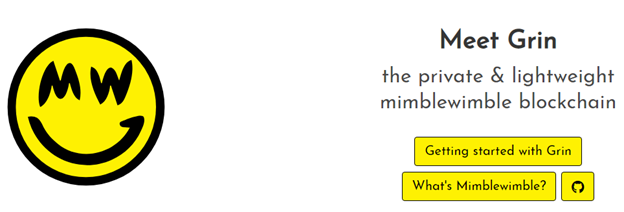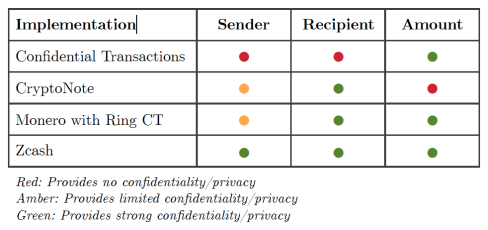What is MimbleWimble? Will it Revolutionize Cryptocurrencies?
The current blockchain systems such as Bitcoin are faced with a problem when it comes to recalling the data stored on the blockchain. Mimble wimble blockchains are set to switch the narrative offering smaller blocks by removing useless transaction data.

“Mimblewimble” is born from a tongue-tying Harry Potter spell
Mimblewimble is a word derived from the Harry Potter’s series referring to the tongue-tying curse originally used by Gilderoy Lockhart to teach his students to better defend themselves in the Duelling Club.
Blockchain’s transaction data problem
The advent of blockchains brought about a revolutionary technology system that is secure, efficient and most importantly, transparent. Public users and stakeholders can check and verify the cryptographic transactions on the blockchain given data is permanently stored on the blockchain. Nonetheless, to verify the data, users will need to download the whole blockchain (approximately 80GB) and replay the transactions until the specific transaction needed is played.
Replaying each transaction on the blockchain is time consuming despite the benefits including transparency. It would be easier for the validator to go straight to the required transaction without downloading the whole blockchain and checking each transaction.
“It would be better if an auditor needed only to check data on the outputs themselves, but this is impossible because they are valid if and only if the output is at the end of a chain of previous outputs, each signs the next. In other words, the whole blockchain must be validated to confirm the final state.”
– Pseudo Tom Elvis Jedusor (Harry Potter fictional character, Voldemort)
This is the Mimble Wimble problem as explained by Tom Elvis Jedusor in a white paper published in June 2016.
How Mimblewimble transactions work
Confidential transactions: Obfuscating transaction data from external parties
Mimblewimble transactions are derived from confidential transactions, invented by Adam Back. Confidential transactions use blinding factors to encrypt the amount of BTC in a transaction hence only senders and receivers know the amount of the transaction.
A Blinding factor is a random value used to encrypt bitcoin amounts in a transaction and is chosen by the sender of a transaction. This value encrypts the amount of the transaction without affecting the transaction channel.
In a similar fashion, Mimble wimble transactions use a blinding factor to encrypt the Bitcoins from external parties. However, instead of the sender choosing the value, they send a random list of blinding factors for the receiver to choose from. This value is then used by the recipient to access and spend the BTC coins.
CoinJoin: Merging transaction between blocks
Mimblewimble transactions are a combination of confidential transactions and CoinJoin, a platform that combines multiple payment transactions into a single transaction. This obfuscates the spenders of bitcoin as verifiers or onlookers cannot identify a single transaction in the combined lot. The transaction can only be read as one huge transaction despite multiple transactions within it.

Image: Shutterstock
The blocks from a Mimblewimble transaction would therefore only contain the list of inputs, outputs and the signature data to validate the transaction. By getting rid of all the unnecessary transaction data usually present in blockchains today, Mimblewimble transactions save space while allowing blocks to hold more transactions.
“On Bitcoin today there are about 423000 blocks, totaling 80GB or so of data on the hard drive to validate everything. These data are about 150 million transactions and 5 million unspent non-confidential outputs.”
– Mimblewimble whitepaper, 2016
To verify that the entries on the block are valid, a simple subtraction of the outputs from inputs should equal to zero. Mimblewimble transactions offer the user a more scalable blockchain with total anonymity of the transactions.
Implementing Mimblewimble: The Grin Project

Grin Project
Mimblewimble transactions are yet to take root in the cryptocurrency industry. Only two projects have taken up the technology namely Grin and Beam projects. The latter is yet to be released as the development of the protocol is set to be completed in the first half this year.
Grin is a privacy-coin that has no amounts and no addresses. Transactions can be trivially aggregated. To hide where a newly created transaction comes from, it gets relayed privately (a “random walk”) among peers before it is publicly announced. The first Mimblewimble blockchain, Grin offers cryptographic security to users’ funds while removing useless transaction data on the blockchain.
The Grin project is set to release its mainnet on 15th January 2019.
Conclusion
The anonymous nature of Mimblewimble transactions and smaller blocks makes the technology superior than the current privacy mechanisms such as ZK-Snarks and Ring CT signatures. ZCash (ZEC) and Monero (XMR) are two of the largest privacy coins using ZK-snarks and ring signatures respectively. However, these privacy coins face challenges such as bulky transaction data, scalability issues and lack of complete privacy.

Comparison of various privacy technologies (Image: R3)
While Mimblewimble is still in development, it can solve these issues as development continues. We will have to wait and see how well Grin project will perform during 2019 after it launches its mainnet.
Want to know more about it, join us on our Discord and Telegram channels and get into the discussion, or join our 8000 member community on our ICO DOG Investment Platform:
Discord: https://discordapp.com/invite/d4EpnZc
Telegram:https://t.me/ICO_DOG_POOL!
ICODOG: https://icodogpool.com/!
To listen to the audio version of this article click on the play image.

Brought to you by @tts. If you find it useful please consider upvoting this reply.
Congratulations @icodog! You have completed the following achievement on the Steem blockchain and have been rewarded with new badge(s) :
Click here to view your Board
If you no longer want to receive notifications, reply to this comment with the word
STOPDo not miss the last post from @steemitboard:
If this is really a better system, what will hold Monero back to use it themselves? Does Grin have patents?
Because Monero already has all the infrastructure since it's the market leader. On the darknet everyone switched from Bitcoin to Monero a long time ago. Even ransomeware works with Monero nowadays. Grin has a lot to catch up to.
Btw i'm wondering, why did nobody invent a stable coin with privacy features already?
I like Monero but a lot of people buy it to speculate. Merchants want something that's stable, the volatility is just insane. The only question is how to peg it and to what? I think smart contracts might be the answer.